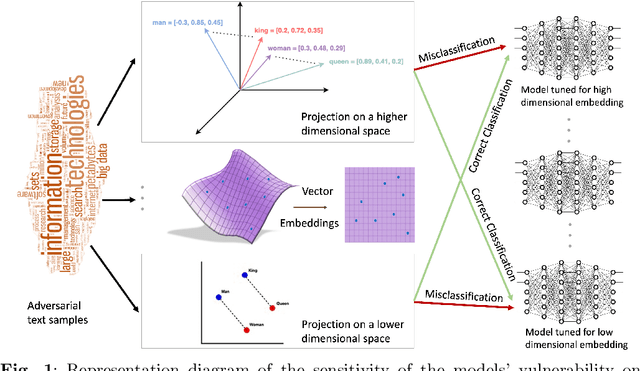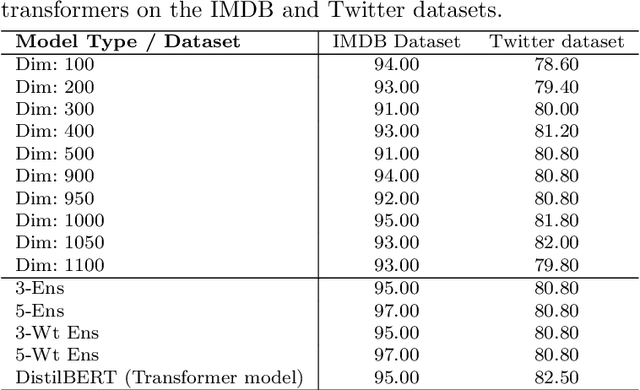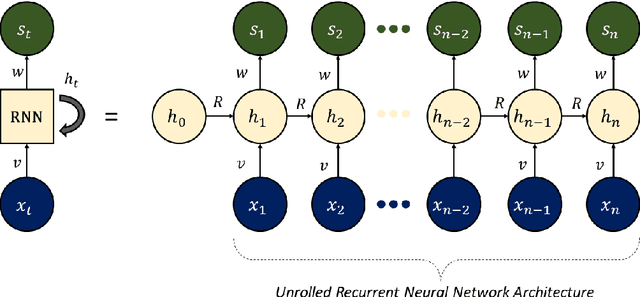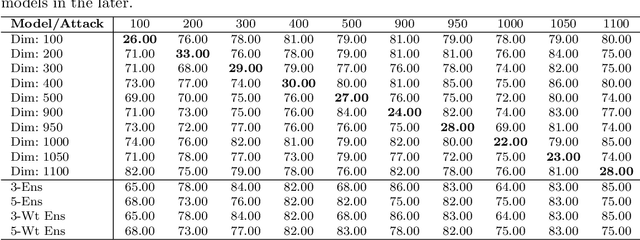Anupam Chattopadhyay
Efficient and Encrypted Inference using Binarized Neural Networks within In-Memory Computing Architectures
Oct 27, 2025Abstract:Binarized Neural Networks (BNNs) are a class of deep neural networks designed to utilize minimal computational resources, which drives their popularity across various applications. Recent studies highlight the potential of mapping BNN model parameters onto emerging non-volatile memory technologies, specifically using crossbar architectures, resulting in improved inference performance compared to traditional CMOS implementations. However, the common practice of protecting model parameters from theft attacks by storing them in an encrypted format and decrypting them at runtime introduces significant computational overhead, thus undermining the core principles of in-memory computing, which aim to integrate computation and storage. This paper presents a robust strategy for protecting BNN model parameters, particularly within in-memory computing frameworks. Our method utilizes a secret key derived from a physical unclonable function to transform model parameters prior to storage in the crossbar. Subsequently, the inference operations are performed on the encrypted weights, achieving a very special case of Fully Homomorphic Encryption (FHE) with minimal runtime overhead. Our analysis reveals that inference conducted without the secret key results in drastically diminished performance, with accuracy falling below 15%. These results validate the effectiveness of our protection strategy in securing BNNs within in-memory computing architectures while preserving computational efficiency.
Learning Nonlinearity of Boolean Functions: An Experimentation with Neural Networks
Feb 03, 2025



Abstract:This paper investigates the learnability of the nonlinearity property of Boolean functions using neural networks. We train encoder style deep neural networks to learn to predict the nonlinearity of Boolean functions from examples of functions in the form of a truth table and their corresponding nonlinearity values. We report empirical results to show that deep neural networks are able to learn to predict the property for functions in 4 and 5 variables with an accuracy above 95%. While these results are positive and a disciplined analysis is being presented for the first time in this regard, we should also underline the statutory warning that it seems quite challenging to extend the idea to higher number of variables, and it is also not clear whether one can get advantage in terms of time and space complexity over the existing combinatorial algorithms.
Persistence of Backdoor-based Watermarks for Neural Networks: A Comprehensive Evaluation
Jan 06, 2025



Abstract:Deep Neural Networks (DNNs) have gained considerable traction in recent years due to the unparalleled results they gathered. However, the cost behind training such sophisticated models is resource intensive, resulting in many to consider DNNs to be intellectual property (IP) to model owners. In this era of cloud computing, high-performance DNNs are often deployed all over the internet so that people can access them publicly. As such, DNN watermarking schemes, especially backdoor-based watermarks, have been actively developed in recent years to preserve proprietary rights. Nonetheless, there lies much uncertainty on the robustness of existing backdoor watermark schemes, towards both adversarial attacks and unintended means such as fine-tuning neural network models. One reason for this is that no complete guarantee of robustness can be assured in the context of backdoor-based watermark. In this paper, we extensively evaluate the persistence of recent backdoor-based watermarks within neural networks in the scenario of fine-tuning, we propose/develop a novel data-driven idea to restore watermark after fine-tuning without exposing the trigger set. Our empirical results show that by solely introducing training data after fine-tuning, the watermark can be restored if model parameters do not shift dramatically during fine-tuning. Depending on the types of trigger samples used, trigger accuracy can be reinstated to up to 100%. Our study further explores how the restoration process works using loss landscape visualization, as well as the idea of introducing training data in fine-tuning stage to alleviate watermark vanishing.
BlockDoor: Blocking Backdoor Based Watermarks in Deep Neural Networks
Dec 14, 2024Abstract:Adoption of machine learning models across industries have turned Neural Networks (DNNs) into a prized Intellectual Property (IP), which needs to be protected from being stolen or being used without authorization. This topic gave rise to multiple watermarking schemes, through which, one can establish the ownership of a model. Watermarking using backdooring is the most well established method available in the literature, with specific works demonstrating the difficulty in removing the watermarks, embedded as backdoors within the weights of the network. However, in our work, we have identified a critical flaw in the design of the watermark verification with backdoors, pertaining to the behaviour of the samples of the Trigger Set, which acts as the secret key. In this paper, we present BlockDoor, which is a comprehensive package of techniques that is used as a wrapper to block all three different kinds of Trigger samples, which are used in the literature as means to embed watermarks within the trained neural networks as backdoors. The framework implemented through BlockDoor is able to detect potential Trigger samples, through separate functions for adversarial noise based triggers, out-of-distribution triggers and random label based triggers. Apart from a simple Denial-of-Service for a potential Trigger sample, our approach is also able to modify the Trigger samples for correct machine learning functionality. Extensive evaluation of BlockDoor establishes that it is able to significantly reduce the watermark validation accuracy of the Trigger set by up to $98\%$ without compromising on functionality, delivering up to a less than $1\%$ drop on the clean samples. BlockDoor has been tested on multiple datasets and neural architectures.
Privacy-Preserving Graph-Based Machine Learning with Fully Homomorphic Encryption for Collaborative Anti-Money Laundering
Nov 05, 2024



Abstract:Combating money laundering has become increasingly complex with the rise of cybercrime and digitalization of financial transactions. Graph-based machine learning techniques have emerged as promising tools for Anti-Money Laundering (AML) detection, capturing intricate relationships within money laundering networks. However, the effectiveness of AML solutions is hindered by data silos within financial institutions, limiting collaboration and overall efficacy. This research presents a novel privacy-preserving approach for collaborative AML machine learning, facilitating secure data sharing across institutions and borders while preserving privacy and regulatory compliance. Leveraging Fully Homomorphic Encryption (FHE), computations are directly performed on encrypted data, ensuring the confidentiality of financial data. Notably, FHE over the Torus (TFHE) was integrated with graph-based machine learning using Zama Concrete ML. The research contributes two key privacy-preserving pipelines. First, the development of a privacy-preserving Graph Neural Network (GNN) pipeline was explored. Optimization techniques like quantization and pruning were used to render the GNN FHE-compatible. Second, a privacy-preserving graph-based XGBoost pipeline leveraging Graph Feature Preprocessor (GFP) was successfully developed. Experiments demonstrated strong predictive performance, with the XGBoost model consistently achieving over 99% accuracy, F1-score, precision, and recall on the balanced AML dataset in both unencrypted and FHE-encrypted inference settings. On the imbalanced dataset, the incorporation of graph-based features improved the F1-score by 8%. The research highlights the need to balance the trade-off between privacy and computational efficiency.
Federated Learning Optimization: A Comparative Study of Data and Model Exchange Strategies in Dynamic Networks
Jun 16, 2024



Abstract:The promise and proliferation of large-scale dynamic federated learning gives rise to a prominent open question - is it prudent to share data or model across nodes, if efficiency of transmission and fast knowledge transfer are the prime objectives. This work investigates exactly that. Specifically, we study the choices of exchanging raw data, synthetic data, or (partial) model updates among devices. The implications of these strategies in the context of foundational models are also examined in detail. Accordingly, we obtain key insights about optimal data and model exchange mechanisms considering various environments with different data distributions and dynamic device and network connections. Across various scenarios that we considered, time-limited knowledge transfer efficiency can differ by up to 9.08\%, thus highlighting the importance of this work.
PeerFL: A Simulator for Peer-to-Peer Federated Learning at Scale
May 28, 2024Abstract:This work integrates peer-to-peer federated learning tools with NS3, a widely used network simulator, to create a novel simulator designed to allow heterogeneous device experiments in federated learning. This cross-platform adaptability addresses a critical gap in existing simulation tools, enhancing the overall utility and user experience. NS3 is leveraged to simulate WiFi dynamics to facilitate federated learning experiments with participants that move around physically during training, leading to dynamic network characteristics. Our experiments showcase the simulator's efficiency in computational resource utilization at scale, with a maximum of 450 heterogeneous devices modelled as participants in federated learning. This positions it as a valuable tool for simulation-based investigations in peer-to-peer federated learning. The framework is open source and available for use and extension to the community.
Efficient Quantum Circuits for Machine Learning Activation Functions including Constant T-depth ReLU
Apr 09, 2024



Abstract:In recent years, Quantum Machine Learning (QML) has increasingly captured the interest of researchers. Among the components in this domain, activation functions hold a fundamental and indispensable role. Our research focuses on the development of activation functions quantum circuits for integration into fault-tolerant quantum computing architectures, with an emphasis on minimizing $T$-depth. Specifically, we present novel implementations of ReLU and leaky ReLU activation functions, achieving constant $T$-depths of 4 and 8, respectively. Leveraging quantum lookup tables, we extend our exploration to other activation functions such as the sigmoid. This approach enables us to customize precision and $T$-depth by adjusting the number of qubits, making our results more adaptable to various application scenarios. This study represents a significant advancement towards enhancing the practicality and application of quantum machine learning.
Adversarial Attacks and Dimensionality in Text Classifiers
Apr 03, 2024



Abstract:Adversarial attacks on machine learning algorithms have been a key deterrent to the adoption of AI in many real-world use cases. They significantly undermine the ability of high-performance neural networks by forcing misclassifications. These attacks introduce minute and structured perturbations or alterations in the test samples, imperceptible to human annotators in general, but trained neural networks and other models are sensitive to it. Historically, adversarial attacks have been first identified and studied in the domain of image processing. In this paper, we study adversarial examples in the field of natural language processing, specifically text classification tasks. We investigate the reasons for adversarial vulnerability, particularly in relation to the inherent dimensionality of the model. Our key finding is that there is a very strong correlation between the embedding dimensionality of the adversarial samples and their effectiveness on models tuned with input samples with same embedding dimension. We utilize this sensitivity to design an adversarial defense mechanism. We use ensemble models of varying inherent dimensionality to thwart the attacks. This is tested on multiple datasets for its efficacy in providing robustness. We also study the problem of measuring adversarial perturbation using different distance metrics. For all of the aforementioned studies, we have run tests on multiple models with varying dimensionality and used a word-vector level adversarial attack to substantiate the findings.
Privacy and Security Implications of Cloud-Based AI Services : A Survey
Jan 31, 2024Abstract:This paper details the privacy and security landscape in today's cloud ecosystem and identifies that there is a gap in addressing the risks introduced by machine learning models. As machine learning algorithms continue to evolve and find applications across diverse domains, the need to categorize and quantify privacy and security risks becomes increasingly critical. With the emerging trend of AI-as-a-Service (AIaaS), machine learned AI models (or ML models) are deployed on the cloud by model providers and used by model consumers. We first survey the AIaaS landscape to document the various kinds of liabilities that ML models, especially Deep Neural Networks pose and then introduce a taxonomy to bridge this gap by holistically examining the risks that creators and consumers of ML models are exposed to and their known defences till date. Such a structured approach will be beneficial for ML model providers to create robust solutions. Likewise, ML model consumers will find it valuable to evaluate such solutions and understand the implications of their engagement with such services. The proposed taxonomies provide a foundational basis for solutions in private, secure and robust ML, paving the way for more transparent and resilient AI systems.
 Add to Chrome
Add to Chrome Add to Firefox
Add to Firefox Add to Edge
Add to Edge